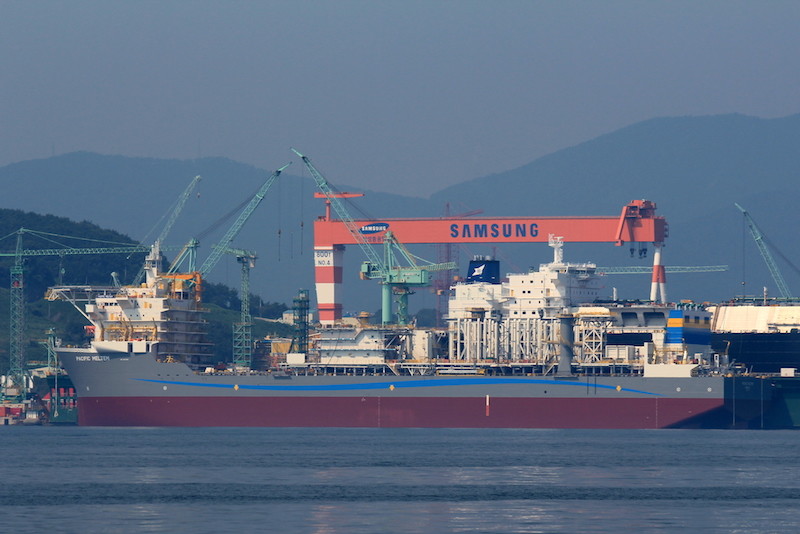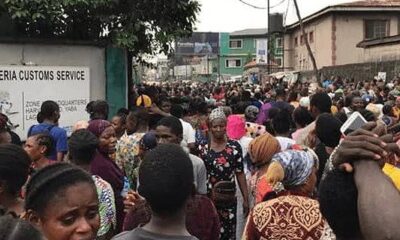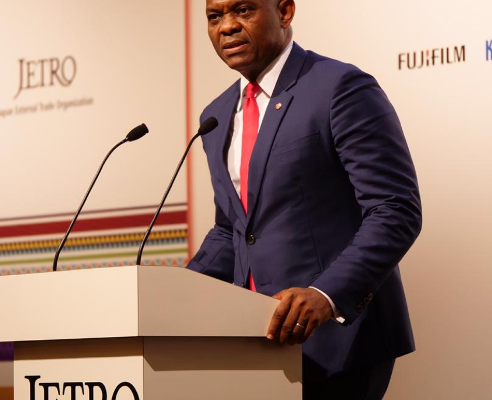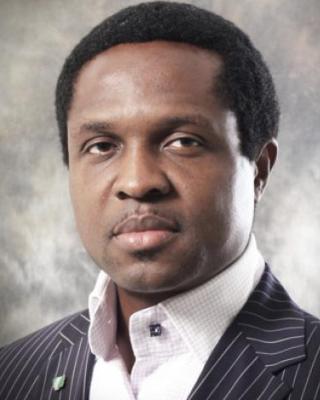International News
Deadly Stampede At Hindu Festival In India Leaves 15 Dead
A devastating pre-dawn stampede at the Kumbh Mela, the world’s largest religious gathering, left at least 15 people dead and dozens more injured early Wednesday.
The tragedy has been traced to a surging crowd breaking through police barriers, trampling bystanders in a chaotic manner.
The tragic incident occurred around 1:00 am local time (1930 GMT Tuesday) as millions of Hindu pilgrims rushed to participate in a sacred ritual bathing at the confluence of the Ganges and Yamuna rivers.
Many of the victims were people resting on the ground when the crowd surged forward in the darkness.
READ MORE: Fire Breaks Out On Air Busan Plane In South Korea, One Injured
“I was sitting near a barricade, and during the pushing and shoving, the entire crowd fell on top of me, trampling me as it moved forward,” said 48-year-old pilgrim Renu Devi. “When the crowd surged, elderly people and women were crushed, and no one came forward to help.”
Emergency teams quickly responded, carrying victims away on stretchers as discarded shoes, clothing, and personal belongings littered the area.
Authorities have yet to release an official death toll, but a doctor treating survivors at a nearby hospital confirmed “at least 15 people” had died, with many more injured.
The doctor spoke on condition of anonymity, as they were not authorized to discuss the situation publicly.
Indian Prime Minister Narendra Modi described the tragedy as “extremely sad” and extended his “deepest condolences” to the families of the victims. “I wish for the speedy recovery of all injured,” he added.
Meanwhile, political opposition leader Rahul Gandhi criticized the authorities, blaming the disaster on poor crowd control.
“Mismanagement and the administration’s special focus on VIP movement instead of common devotees are responsible for this tragic incident,” he wrote on social media.
The six-week Kumbh Mela is one of the holiest events in the Hindu calendar, drawing tens of millions of devotees.
Wednesday was a particularly significant bathing day, with saffron-clad holy men leading mass rituals.
However, in the aftermath of the stampede, festival officials patrolled the grounds with loudspeakers, urging pilgrims to stay away from the main bathing area.
“We humbly request all devotees do not come to the main bathing spot,” one official announced over a megaphone. “Please cooperate with security personnel.”
Despite the warnings, state officials reported that millions of pilgrims had already taken their ritual baths between midnight and early morning.
Uttar Pradesh Chief Minister Yogi Adityanath stated that medical workers were treating the seriously injured and assured the public that the situation was “under control.”
The Kumbh Mela is a logistical challenge of enormous scale.
Organizers had likened this year’s event to the size of a temporary nation, with an estimated 400 million pilgrims expected by the festival’s end on February 26.
To manage the crowds, authorities installed hundreds of surveillance cameras and drones to monitor congestion.
However, stampedes at religious events remain a deadly risk in India. In 1954, over 400 people died in a single day at the Kumbh Mela, marking one of the deadliest crowd disasters in history.
More recently, in 2013, another 36 pilgrims lost their lives in a similar tragedy in Prayagraj.
Despite the security measures in place, Wednesday’s stampede has once again raised concerns about crowd management at massive religious gatherings.
As frightened devotees began leaving Prayagraj, railway official Manish Kumar reported that several special train services had been halted due to excessive crowding.
“I heard the news and saw the bathing site,” said festival attendee Sanjay Nishad. “My family got scared, so we’re leaving.”
International News
Massive 7.7 Magnitude Earthquake Rocks Myanmar, Shakes Southeast Asia
A powerful 7.7-magnitude earthquake struck central Myanmar on Friday, shaking the region and sending tremors as far as Thailand and China.
The quake’s epicenter was located in the Sagaing region, near Mandalay, Myanmar’s second-largest city, home to around one million people and renowned for its historic temple complexes.
Panic erupted as buildings swayed and dust filled the air.
READ ALSO: Powerful 6.8-Magnitude Earthquake Hits China, Dozens Killed
In Mandalay, videos shared online showed terrified residents rushing out of residential towers while traffic came to a sudden halt.
Reports indicate that a major bridge spanning the Irrawaddy River collapsed into the water in a cloud of dust and debris.
The quake was felt as far as Bangkok, Thailand’s capital, where video footage showed a partially constructed building in Chatuchak Park crumbling to the ground.
Thai authorities reported that 43 people were trapped in the wreckage, while seven others sustained injuries.
In Chiang Mai, a resident described feeling the tremors for about ten seconds before fleeing into the streets.
In Myanmar’s commercial hub, Yangon—about 380 miles from the epicenter—residents also experienced the powerful shaking.
One resident recalled, “We felt the quake for about a minute, then ran out of the building.
It was very sudden and very strong.” Another noted that phone networks in the city, home to around 8 million people, briefly went down but were later restored.
Myanmar, one of Asia’s poorest nations, is already grappling with the effects of a brutal civil war sparked by a military coup over four years ago.
The conflict has devastated the economy, and the country remains ill-equipped to handle a major natural disaster of this scale.
The Sagaing region, where the earthquake struck, is a war zone with multiple factions—including the ruling junta, pro-military militias, and rebel groups—fighting for control.
The ongoing violence has made travel by road or river extremely dangerous, posing significant challenges to delivering emergency aid and assessing the full extent of the damage.
Tremors were also felt in China’s southwestern Yunnan province, underscoring the quake’s intensity.
Authorities across the region are now assessing the situation, with emergency teams mobilizing in both Myanmar and Thailand.
International News
Samsung Electronics Co-CEO, Han Jong-hee Dies At 63

Han Jong-hee, co-CEO of Samsung Electronics and a driving force behind the company’s dominance in the global television market, has died of a heart attack at the age of 63, the company confirmed on Tuesday.
“He died from cardiac arrest today,” a Samsung spokesperson stated, adding that Han is survived by his wife and three children.
Having joined the company in 1988, Han played a significant role in shaping Samsung’s television business.
READ MORE: Samsung Reports Worst Quarterly Profits In 14 Years
His leadership was instrumental in the launch and success of the company’s high-end LED TVs, which helped establish Samsung as a global leader in the industry.
“Han was central in the unveiling of Samsung’s world-class LED TVs,” the company noted in a biography published earlier this month. “His numerous other innovations enabled the company to continually demonstrate its technology leadership.”
His efforts ensured that Samsung maintained its position as a dominant force in the global television market.
Han’s death comes at a time when Samsung Electronics is grappling with challenges in the AI chip sector.
The company has been facing difficulties in meeting Nvidia’s standards, while its South Korean competitor, SK Hynix, has emerged as the leading supplier of high-bandwidth memory (HBM) chips for Nvidia’s AI processors.
Chairman Lee Jae-yong recently underscored the urgency of the situation, urging Samsung to adopt a “do-or-die” approach to overcome the growing challenges in the AI industry.
Last October, the company acknowledged it was facing a “crisis,” citing concerns over its “fundamental technological competitiveness and the future of the company.”
International News
Pope Francis To Return To Vatican After Month-Long Treatment
Pope Francis will on Sunday be discharged from Rome’s Gemelli hospital, where he has been receiving treatment since February 14 for breathing difficulties and pneumonia.
The 88-year-old pontiff will return to his residence at Saint Martha’s House in the Vatican, where doctors have advised that he undergo “a long convalescence… of at least two months.”
Speaking to reporters on Saturday, Dr. Sergio Alfieri explained that while the pope’s health is improving, further recovery is best achieved at home.
READ ALSO: Pope Francis’ Condition Improving, Says Vatican
“Further progress will take place at his home, because a hospital — even if this seems strange — is the worst place to recover because it’s where one can contract more infections,” Alfieri said.
Dr. Luca Carbone, another physician at Gemelli, added that there are positive signs in the pope’s condition. “We hope that he will soon be able to resume his normal activities,” he stated.
Before leaving the hospital, Pope Francis is expected to greet the public and offer a blessing from a hospital balcony after the Angelus prayers on Sunday, marking his first appearance in weeks.
Speculation about a possible resignation has been circulating due to the pope’s prolonged absence from public duties, but Vatican officials have firmly denied such claims.
When asked if the topic had been discussed, Vatican Secretary of State Pietro Parolin was clear in his response: “No, no, no, absolutely not.”
The pope, who had part of a lung removed in his youth, has received an outpouring of prayers and well-wishes from Catholics worldwide.
Supporters have been gathering outside Gemelli hospital, leaving flowers, candles, and messages of encouragement.
His hospitalization, the longest of his papacy has led to questions about how Easter celebrations will be handled in his absence.
However, Vatican officials remain optimistic about his gradual return to his duties in the coming weeks.















